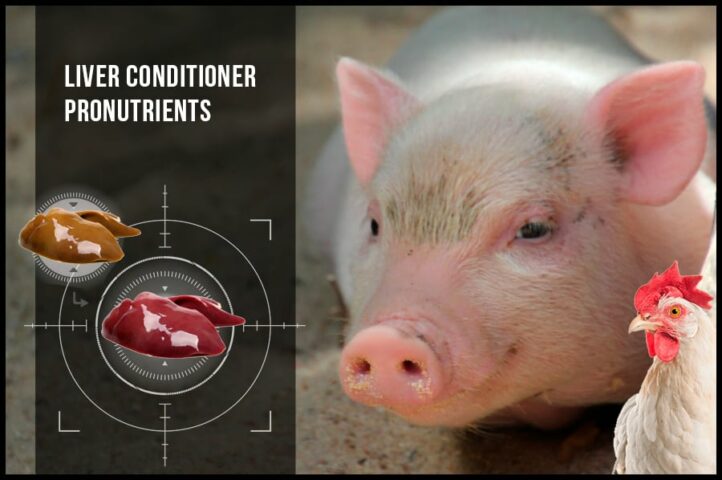
(1) The liver is one of the most active organs in all types of animals:
1.1 It filters all the blood coming from the stomach and the intestines, and with the simple molecules received, it synthesizes complex molecules that regulate the biochemical levels of the blood. When these molecules reach the different organs, they enable them to be properly nourished.
1.2 Recycles toxins from feed and metabolism waste (for example, haemoglobin) and converts them into less toxic ones or removes them via the bile.
1.3 Stores excess glucose (in the form of glycogen) and fat-soluble vitamins (a, d³, e).
In veterinary nosology, there was an aphorism that highlighted the importance of this organ: “the liver is the oven, where the health of the whole organism is cooked”.
(2) The liver is formed by hepatic lobes, that are formed by hepatic lobules which are the basic functional units.
The lobules are mainly formed by the hepatocytes, which are the specific cells of the liver and where all the hepatic functions take place, hepatocyte by hepatocyte.
(3) Within the hepatocytes, we must highlight two organelles due to their abundance and functional importance: the mitochondria and the ribosomes.
3.1 The mitochondria, situated close to the nucleus and the reticulum, are responsible for generating the energy used for the vital functions of the hepatocyte.
3.2 The ribosomes, situated on the outer surface of the rough endoplasmic reticulum, receive mRNA molecules from the nucleus with the instructions and with them synthesize specific functional proteins.
3.3 Hepatocytes have a longer average lifespan than enterocytes. The hepatocytes come from a diverticulum of the intestine that becomes the liver. The replacement of the hepatocytes is carried out from their stem cells.
(4) Two facts are important to understand the physiology of the liver:
4.1 The functionality of ribosomes.
4.2 The replacement of hepatocytes.
(5) In wild animals, the size and functionality of the liver are adapted to the needs of growth and exercise. However, farm animals are selected to obtain high levels of production, which involve intense feeding that produces work overload, both to the intestine and the liver. As an example, a wild chicken grows up to 1.25 kg in two years, while a farmed chicken reaches 2.5 kg in 35 days. This means a 20 times higher work overload. This overexertion can be evaluated through the imbalance of liver enzymes in the blood and by the enlargement of the liver, known as physiological hepatomegaly.
(6) Biovet’s research on liver function has shown that liver physiology can be stimulated by pronutrients, molecules of botanical origin called liver conditioners. Pronutrients stimulate the production of mRNA in the nucleus of the hepatocyte, and, consequently, the ribosomes synthesize more specific functional proteins, promoting the liver functions described in points 1.1, 1.2 and 1.3 of this document.
(7) The use of liver conditioner pronutrients normalizes the liver size by reducing physiological hepatomegaly (proof of improved liver efficiency).
7.1 In poultry, it improves the serum protein level between 8.30% and 10.81%, providing a higher availability of protein. In broilers, it increases the live weight (4.73%) and the carcass yield (5.52%), and in layers increases laying by 3%, the duration of the productive stage and the hatchability of the eggs, while it reduces the liver weight -9.66.
7.2 In pigs, it improves growth (1.41%) and feed conversion rate (1.8%).
7.3 Analytically, its efficacy is demonstrated by the reduction in the quantity of enzymes in the blood which are indicators of liver damage:
(*) Alkaline Phosphatase (AP) between 36.5% and 40.1%
(*) Aspartate Aminotransferase (AST/TGO) between 11.1% and 15.6
(*) Alanine Aminotransferase (ALT/TGP) between 2.9% and 11.1%.
(8) As a result of its comprehensive research on the use of liver conditioner pronutrients, Biovet S.A. has obtained several patents and markets liver conditioners under the name ILIV.
